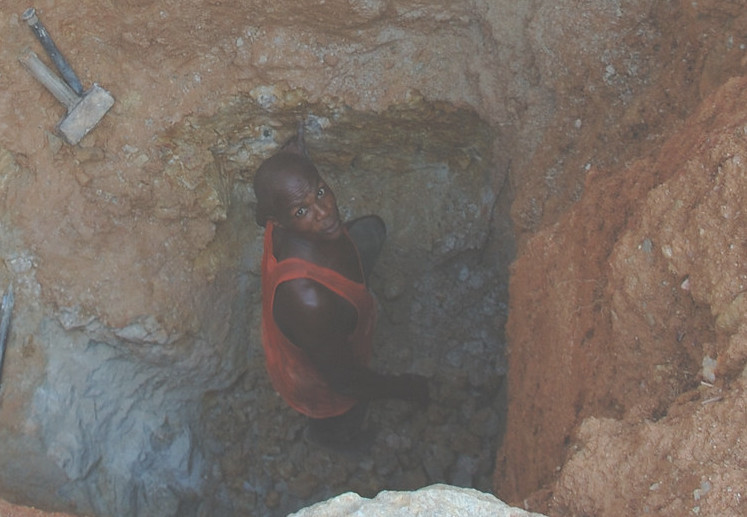
Zero Carbon Green Agenda Is Impossible In All Respects
By F. William Engdahl
9 April 2023
Why are major governments, corporations, think tanks and the Davos WEF all promoting a Zero Carbon global agenda to eliminate use of oil, gas, coal? They know that the turn to solar and wind-based electricity is impossible. It is impossible because of the demand for raw materials from copper to cobalt to lithium to concrete and steel exceeding global supply. It is impossible because of the staggering trillions in cost of battery backup for a “reliable” 100% renewable electric grid. It is also impossible without causing the collapse of our present standard of living and a breakdown of our food supply that will mean mass death from starvation and disease. All this for a scientific fraud called man-made global warming?
Even paling the brazen corruption surrounding the recent vaccine push by Big Pharma and major government officials globally is the mindless push by especially EU and USA governments to advance a Green Agenda whose costs vs benefits have rarely been openly examined. There is a good reason for this. It has to do with a sinister agenda to destroy industrial economies and reduce the global population by billions of human beings.
We can examine the stated goal of Zero Carbon globally by 2050, the UN Agenda 2030, allegedly to prevent what Al Gore and others claim will be a tipping into irreversible sea level rise, “boiling oceans,” iceberg meltdowns, global catastrophe and worse. In one of his first acts in office, in 2021 Joe Biden issued a proclamation that the USA economy shall become Zero Net Carbon by 2050 in transportation, electricity and manufacturing. The European Union, under the notoriously corrupt Ursula von der Leyen, has announced similar targets in its Fit for 55 and countless other Green Agenda programs.
Farming and all aspects of modern agriculture are being targeted with fake allegations of greenhouse gas damage to the climate. Oil, natural gas, coal and even CO2-free nuclear energy are being phased out. We are being pushed for the first time in modern history from a more energy-efficient economy into a dramatically less energy-efficient one. No one in Washington or Berlin or Brussels talks about the true required natural resources for this fraud, let alone the cost.
Clean Green Energy?
One of the most remarkable aspects of the fraudulent global hype for so-called “clean, renewable” Green Energy—solar and wind—is how non-renewable and environmentally dirty it actually is. Almost no attention goes to the staggering environmental costs that go into making the mammoth wind towers or solar panels or EV lithium-ion batteries. That grave omission is deliberate.
Solar panels and giant wind power arrays require huge amounts of raw materials. A standard engineering evaluation between “renewable” solar and wind versus present nuclear, gas or coal electricity production would begin by comparing bulk materials used such as concrete, steel, aluminum, copper consumed per production of TeraWatt hour (TWh) of electricity. Wind consumes 5,931 tons of bulk material per TWh, and solar 2,441 tons, both many times higher than coal, gas or nuclear. Building a single wind turbine requires 900 tons of steel, 2,500 tons of concrete and 45 tons of non-recyclable plastic. Solar power farms require even more cement, steel and glass—not to mention other metals. Keep in mind the energy efficiency of wind and solar is dramatically lower than for conventional electricity.
A recent study by the Institute for Sustainable Futures details the impossible demands of mining for not only EV vehicles, but, in addition, for 100% renewable electric power, mainly solar and wind farms. The report notes that the raw materials to make solar PV panels or windmills are concentrated in a small number of countries—China, Australia, DR Congo, Chile, Bolivia, Argentina.
They point out that, “China is the largest producer of metals used in solar PV and wind technologies, with the largest share of production for aluminum, cadmium, gallium, indium, rare earths, selenium and tellurium. In addition, China also has a large influence over the market for cobalt and lithium for batteries.” It continues, “While Australia is the largest producer of lithium ...the largest lithium mine, Greenbushes in Western Australia, is majority owned by a Chinese company.” Not so good when the West is escalating confrontation with China.
They note that regarding the huge concentration of cobalt, that the DR Congo mines more than half of the world’s cobalt. The mining there has led to “heavy metal contamination of air, water and soil… to severe health impacts for miners and surrounding communities in DR Congo, and the cobalt mining area is one of the top ten most polluted places in the world. Around 20% of cobalt from DR Congo is from artisanal and small-scale miners who work in dangerous conditions in hand-dug mines and there is extensive child labor. ‘’
Rare earth metals mining and refining is essential for the Zero Carbon transition in batteries, windmills and solar panels. According to one report by energy specialist Paul Driessen, “Most of the world’s rare earth ores are extracted near Baotou, Inner Mongolia by pumping acid into the ground, then processed using more acids and chemicals. Producing one ton of rare earth metals releases up to 420,000 cubic feet of toxic gases, 2,600 cubic feet of acidic waste-water, and a ton of radioactive waste. The resulting black sludge is piped into a foul, lifeless lake. Numerous local people suffer from severe skin and respiratory diseases, children are born with soft bones, and cancer rates have soared.” The USA also sends most all its rare earth ores to China for processing since it shut down domestic processing during the Clinton presidency.
Because they are vastly less energy efficient per area, the land used to produce the mandated Zero Carbon global electric output is staggering. Wind and solar require up to 300 times the land required to produce the same electricity as a typical nuclear plant. In China 25 square kilometers of a solar farm are required to generate 850 MW of electric power, the size of a typical nuclear plant.typical nuclear plant.
Ground Up Total Cost
Almost no studies by the Green Lobby look at the total production chain from mining to smelting to production for solar panels and wind assemblies. Instead they make fraudulent assertions of the alleged lower cost per KWh of produced solar or wind at the highly subsidized costs. In 2021 Professor Simon P. Michaux of the Geological Survey of Finland (GTK) published an unusual study of the materials costs in terms of raw materials to produce a global Zero Carbon economy. The costs are staggering.
Michaux points first to the present reality of the Net Zero Carbon challenge. The global energy system in 2018 was 85% dependent on carbon fuels—coal, gas, oil. Another 10% came from nuclear for a total of 95% energy from conventional energy. Only 4% came from renewables, mainly solar and wind. So our politicians are talking of replacing 95% of our current global energy production by latest 2050, and a major part of this by 2030.
In terms of electric vehicles—cars or trucks or buses—of the total of the global fleet of vehicles of some 1.4 billion vehicles, less than 1% is now electric. He estimates that, “the total additional non-fossil fuel electrical power annual capacity to be added to the global grid will need to be around 37 670.6 TWh. If the same non-fossil fuel energy mix as that reported in 2018 is assumed, then this translates into an extra 221 594 new power plants that will be needed to be constructed… To put this in context, the total power plant fleet in 2018 (all types including fossil fuel plants) was only 46 423 stations. This large number reflects the lower Energy Returned on Energy Invested (ERoEI) ratio of renewable power compared to current fossil fuels.”
Michaux estimates further if we were to go total EV, “To make just one battery for each vehicle in the global transport fleet (excluding Class 8 HCV trucks), it would require 48.2% of 2018 global nickel reserves, and 43.8% of global lithium reserves. There is also not enough cobalt in current reserves to meet this demand... Each of the 1.39 billion lithium ion batteries could only have a useful working life of 8 to 10 years. So, 8-10 years after manufacture, new replacement batteries will be required, from either a mined mineral source, or a recycled metal source. This is unlikely to be practical…” He is stating the problem very mildly.
Michaux also points to the staggering demand for copper, noting that, “for copper alone 4.5 billion tons (1,000 kilograms per ton) of copper are needed. That's about six times the total amount that humans have so far extracted from the Earth. The rock-to-metal ratio for copper is more than 500, so it would be necessary to dig up and refine more than 2.25 trillion tons of ore.” And the mining equipment would have to be diesel-powered to work.
Michaux concludes that simply, “To phase out petroleum products and substitute the use of oil in the transport sector with a completely Electric Vehicle fleet, an extra capacity of 1.09 x 1013 kWh (10 895.7 TWh) of electricity generation is required from the global power grid to charge the batteries of the 1.416 billion vehicles in the global fleet. As total global electricity generation in 2018 was 2.66 x 1013 kWh (Appendix B), this means that to make viable the EV revolution, an extra capacity of 66.7% the existing entire global capacity to generate electricity is required to be added…The task of making the EV battery revolution is much larger in scope than previously thought.”
That is only to replace vehicle internal combustion engines globally.
Wind and Solar?
Then if we look to the proposed substitution of solar arrays and onshore and offshore wind power for current 95% conventional electric power sources to get to the absurd and arbitrary Zero Carbon goal in the next few years, all to avert Al Gore’s fake “tipping point” of 1.5 C rise in average global temperature (which itself is an absurd notion), the calculus gets even more absurd.
The main problem with wind and solar farms is the fact that they are not reliable, something essential for our modern economy, even in developing countries. Unpredictable power blackouts that affect the grid stability were almost nonexistent in the US or Europe until introduction of major solar and wind. If we insist as do the Zero Carbon ideologues, that no backup oil, gas or coal plants be allowed to stabilize the grid in low solar times such as night or cloudy days or winter, or times when wind does not blow at the optimal velocity, the only serious answer being discussed is to build EV battery storage, lots of it.
The cost estimates of such E-battery storage backup vary. Van Snyder, a retired mathematician and systems engineer calculates the cost for such huge battery backup to the USA power grid to ensure reliable steady electricity at today’s level: “So, how much would batteries cost? Using the most optimistic 400 watt hours requirement -- something a real engineer would never do -- and assuming installation is free -- another thing a real engineer would never do -- one might look in Tesla's catalogue and discover the price is $0.543 per watt hour -- before installation -- and the warranty period, roughly equal to the lifetime, is ten years. Activists insist that an all-electric American energy economy would have average demand of 1,700 gigawatts. If one evaluates the formula 1,700,000,000,000 * 400 * 0.543 / 10, the answer is $37 trillion, or about twice total USA 2020 GDP, every year, for batteries alone.”
Another estimate by Ken Gregory, also an engineer, is similarly impossibly high. He calculates, “If fossil fuel fired electrical power is not available to back up the highly variable S+W energy and only batteries can be used as back up, the battery backup becomes extremely expensive…The total cost to electrify the USA is US$258 trillion with the 2019 profile and US$290 trillion with the 2020 profile.”
The Hidden Agenda
Clearly, the powers behind this mad Zero Carbon agenda know such reality. They don’t care, as their goal has nothing to do with the environment. It is about the eugenics and culling of the human herd as the late Prince Philip famously remarked.
Maurice Strong, founder of the UN Environment Program, in his opening speech to the 1992 Rio Earth Summit, declared, “Isn’t the only hope for the planet that the industrialized civilizations collapse? Isn’t it our responsibility to bring that about?” At the Rio summit Strong oversaw drafting of the UN “Sustainable Environment” goals, the Agenda 21 for Sustainable Development that forms the basis of Klaus Schwab’s Great Reset, as well as creation of the Intergovernmental Panel on Climate Change (IPCC) of the UN.
Strong, a protégé of David Rockefeller was far the most influential figure behind what is today the UN Agenda 2030. He was co-chairman of Klaus Schwab’s Davos World Economic Forum. In 2015 on Strong’s death, Davos founder Klaus Schwab wrote, “He was my mentor since the creation of the Forum: a great friend; an indispensable advisor; and, for many years, a member of our Foundation Board.”




